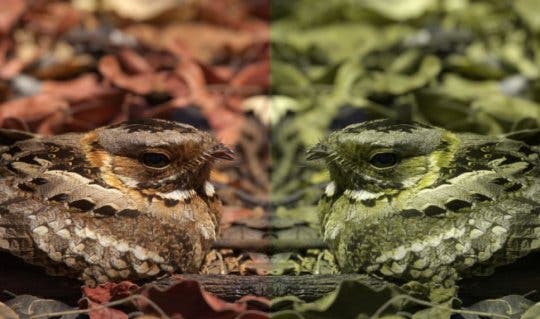Most animals can perceive fewer colors than humans can — while others can see many more. Scientists at the University of Exter have looked at the comparative advantages of di- and trichromatism in finding camouflaged birds in pictures to understand why so many species rely on this limited range of color vision.
Sometimes less is more — but that doesn’t really stand for color receptor cells. Humans have three kinds of these cells on our retinas, so our vision revolves around three basic colors, making us trichromats. But a large number of other animals, including the majority of mammals today, are dichromats who only have two kinds of color receptor and see everything as a mix of only two colors. On the other hand, many bird species (and this one lady) are tetrachromats, and some invertebrates can pick up on many more colors.
But back to dichromats. Most of them are red-green color blind, and that’s also the most common type of color blindness in humans. Moreover, some primate species show color vision polymorphism, meaning certain females are trichromats but most individuals are dichromats. Add all this evidence together, and it begs the question — is there an evolutionary advantage for seeing only two colors instead of three? To find out, a team from the University of Exter has created an online computer game and unleashed it upon the web, where more than 30,000 people played it.
The concept was pretty simple: players were shown photographs either in normal color or in simulated dichromatic vision. There were camouflaged nightjar birds or their nests, containing eggs, somewhere in the image — and the players had to find them.

Image credits University of Exeter.
Seeing a more limited range of colors should make dichromat predators more adept at finding prey since there’s less color, so to speak, to help hide a well-camouflaged dinner. Dichromats should thus have an easier time differentiating between light and dark areas and finding hidden objects, for example — an advantage any aspiring predator would want.
But the team was surprised to find that participants looking at trichromat photos were actually faster at finding the nightjars and eggs that their counterparts. There were large variations in the performance of dichromat players from photo to photo — depending on factors such as camouflage patterns or brightness. Furthermore, over the course of the game, dichromats improved their game faster than trichromats, and by the end of the game, both groups performed equally well.
So it is possible that their performance was worsened as their brains learned the ins and outs of dichromatic vision. It may be that, given a longer period of time to adjust, they could become even better than trichromats at spotting the eggs.
” These results suggest there are substantial differences in the cues available under viewing conditions that simulate different receptor types, and that these interact with the scene in complex ways to affect camouflage breaking,” the team concludes.
The paper “Relative advantages of dichromatic and trichromatic colour vision in camouflage breaking,” has been published in the journal Behavioural Ecology.







